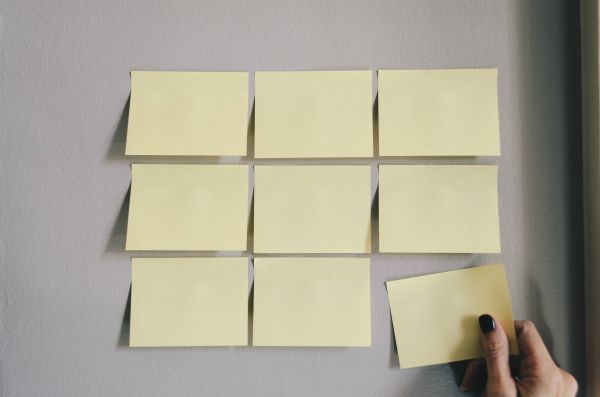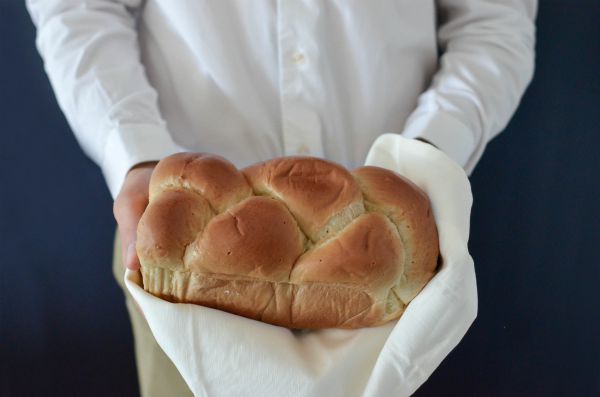Saying thank you when someone passes the salt this holiday season? That’s one way to define gratitude. But it’s a pretty narrow one. Dig a little deeper and you’ll find there are so many ways to feel and express gratitude that you might not have tried yet. Thankfully (see what we did), that’s what we’re here for. We’re about to make expressing gratitude so much easier and more creative than you ever thought possible.
How to Express Gratitude

As for the benefits of truly appreciating the good in your life, there are many. Like feeling happier and more generous. When we express gratitude to others, it can also strengthen bonds and make the other person feel good, too.
So join us as we break down some simple steps on how you can express gratitude this November and the rest of the year too.
This is part three in our gratitude series. Miss parts one and two? Catch up here on our gratitude crash course and simple ways to cultivate those thankful feelings.
1. Make that gratitude list now

Okay, we know. You’ve heard this one before. But we’re going to do something with this, so hang in there. First up, we want the things on your list to be specific. Really specific. The best way to practice gratitude is to really break down which people, things, and moments you can be thankful for in your life.
So don’t just list your best friend, jot down the time they took you out for pancakes because you were feeling down. Or their awesome taste in music, or the way you can sit in silence with them and it never feels awkward.
Singling out small and specific things makes gratitude more effective and also easier to express.
If you get stuck with what to put on your list, our article on cultivating the feeling of gratitude has some more useful tips and prompts to follow.
2. Choose one thing off your list

Okay, step two is to make a choice. While we’re sure everything on your list is worthy of gratitude, let’s just choose one for now. Again, be sure that the thing you chose is specific and detailed. Also think about why you appreciate it and what it means to you.
What impact did/does this person or event have in your life?
3. Get creative with how to express gratitude

Now, when we talk about expressing gratitude, that might mean privately reflecting on it in a personal way or it might mean expressing it to another person directly.
While there are benefits to both, expressing thankfulness to others has been found to be “a crucial step in deriving benefits” of gratitude. If you choose to keep your gratitude expression private, that’s fine too. Just consider making your next gratitude move a little more social. Activities like gratitude journaling also have proven benefits.
The best part of this step is that you can get creative with it. Spend a few minutes brainstorming how you can say thanks in a way that’s both meaningful and enjoyable. Here are some of our examples for expressing gratitude.
Give a gratitude letter (or don’t)

Express your gratitude in writing, including your reasons for being grateful. Make it long and heartfelt or short and funny, whatever feels right. You could thank your mother for putting up with your moody adolescent years, or your barista for perking you up every morning with coffee and a smile.
For maximum benefits, send or deliver your letter. One study that compared five different happiness-boosting activities found that participants who wrote and delivered a letter of gratitude “showed the largest positive changes in the whole study”.
That said, the act of writing alone can still be valuable. Positive psychologist, Sonja Lyubomirsky, says in her book The How of Happiness: “We found that simply writing a gratitude letter and not sending or otherwise delivering it was enough to produce substantial boosts in happiness.”
If you prefer, write your letter to someone who’s no longer in your life. Maybe it’s a relative who’s passed. Or maybe you want to privately thank your ex for teaching you what a good relationship does (and doesn’t) look like.
You can even write notes of thanks to things rather than people. Thanking your jetlag for showing you that beautiful sunrise? Way to get the positive vibes flowing.
Tap into your creative side

If you feel there’s something therapeutic about expressing emotions through art, you’re not alone. Research shows that art therapy is effective in treating a variety of symptoms. For example, cancer patients who painted once per week were less depressed and less fatigued compared to a control group.
So why not use art to express gratitude? How you do this might depend on which gratitude item you chose from your list, as well as where your artistic talents lie. (…though don’t get caught up on needing to be “good” at art to go this direction. We could all use a little more visual expression in our days, no matter where we fall on the talent spectrum.)
You might:
- Paint or draw your gratitude onto paper. The act alone is a form of gratitude expression, though giving your artwork to the subject of your gratitude will brighten their day as well.
- If you’re musically inclined, write a song for someone expressing why you’re thankful to have them in your life. Record it or sing it for them.
- Write a poem or story for someone letting them know you appreciate them.
- Capture the things you’re grateful for in a series of photos.
You don’t have to be Leonardo da Vinci or a Pulitzer Prize-winning author. It’s genuinely expressing your gratitude that counts.
Feed someone’s soul (and belly)

Food is so much more than fuel. Food is emotion, comfort, nostalgia, love. Food can transport you down memory lane the second it touches your taste buds (just ask Proust and his tea-dipped madeleine).
Food can, therefore, be a great way to express gratitude. Sure, you can buy someone a drink or take them out for pizza as a thank you. But how about making it even more meaningful?
One idea is to cook a gratitude meal. Think about recipes relating to memories and experiences you’re grateful for. It might be a dish you once shared with that person during an important moment or a meal that person used to make you that always reminds you of home.
As you share the meal you’ve recreated with that person, express to them what it means to you.
And don’t forget dessert. (Because, dessert.)
Pay it forward

Someone does you a kind one and you’re feeling grateful. Rather than simply thank that person, why not also pay it forward?
Say you forget your wallet and a stranger in the takeaway coffee queue pays for your order. You could pay it forward by paying for someone else’s coffee tab the next day. Even though the original good-doer may never know about it, you can make your act of kindness a conscious expression of your gratitude.
Think about how someone’s actions positively impacted you, and how you can have that same impact on someone else.
Expand your gratitude vocabulary

“Thanks” is easy to say, but we say it so much it sometimes loses weight. Expressing gratitude fully can be about finding the right words—words that get to the heart of what you feel.
Robert A. Emmons, leading expert researcher on gratitude, defines it as “a feeling of reverence for things that are given”. So what if you told someone you revere their words, their art, their actions?
If that feels a little much, here are some other gratitude phrases to consider:
- I appreciate…
- I will treasure/cherish…
- You are… (too kind, a lifesaver, the best…)
- I want you to know how much I value…
- It really meant a lot to me when…
Or add your own. Go with what feels right for the situation. And if that happens to be an all-caps THANK YOU plastered across a custom-made animated gif and sent via text message, well hey—that counts too.
4. Repeat the process

Stepping through the above process once will get you started, but for long-term benefits, you’ll want to express gratitude on the regular.
You don’t need to do a heartfelt gratitude expression exercise every day (in fact, that would probably burn you out). Instead, try returning to your list after a week or so and choosing another item. Now find a way to express your gratitude for that one, bearing in mind that your method of expression might be completely different to last time.
Pay attention to how you feel after you do the activity. Do you feel buoyed by it? If not, consider why. (Maybe you put too much pressure on yourself to create a perfect piece of art, for example, or maybe you’ve written too many gratitude letters in a row). And switch it up the next time around. Expressing gratitude shouldn’t be something you force, but rather something that comes from within.
To sum it all up

We know what gratitude is, why it works, and how to cultivate the feeling. But none of that really matters if we don’t actively express gratitude. To fully reap the rewards, make appreciating the things you’re thankful for a habit. Follow our four steps to build gratitude into one of your keystone habits, and see how your happiness improves as a result.
- Write down all the things you’re grateful for in your world. Get really specific.
- Choose one thing or person from your list as your gratitude subject for the week.
- Brainstorm the best ways to express your gratitude to that person, thing, memory, etc. Get creative with your approaches and consider things like cooking, writing, painting, and more.
- Go back to your original list next week and choose again.
- Add to your list regularly so you never run out.
Your turn: Do you have any other ideas for how to creatively express gratitude? Let us know in the comments.
Want more happiness this holiday season? We’ve got you covered.

Author: Tania Braukamper
Tania Braukamper is an Australian-born writer and photographer. She believes in curiosity, kindness, and adventure as a state of mind.

Let Us Know What You Think